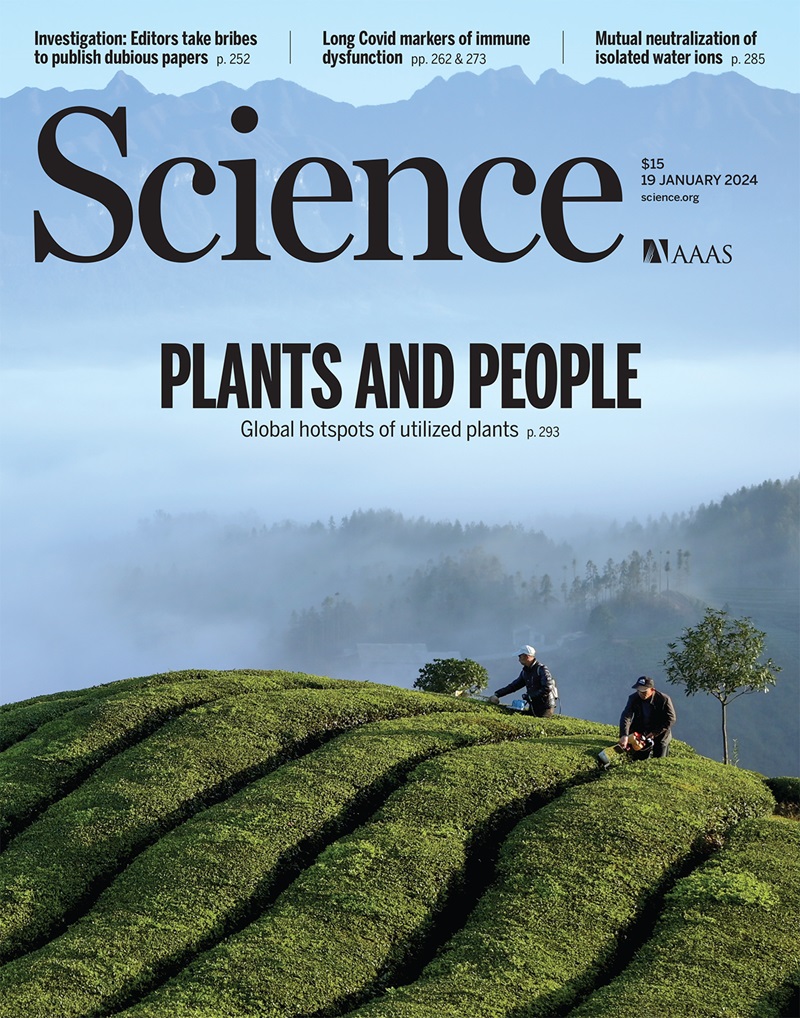The genetic architecture of cell type–specific cis regulation in maize
IF 45.8
1区 综合性期刊
Q1 MULTIDISCIPLINARY SCIENCES
引用次数: 0
Abstract
Gene expression and complex phenotypes are determined by the activity of cis-regulatory elements. However, an understanding of how extant genetic variants affect cis regulation remains limited. Here, we investigated the consequences of cis-regulatory diversity using single-cell genomics of more than 0.7 million nuclei across 172 Zea mays (maize) inbreds. Our analyses pinpointed cis-regulatory elements distinct to domesticated maize and revealed how historical transposon activity has shaped the cis-regulatory landscape. Leveraging population genetics principles, we fine-mapped about 22,000 chromatin accessibility–associated genetic variants with widespread cell type–specific effects. Variants in TEOSINTE BRANCHED1/CYCLOIDEA/PROLIFERATING CELL FACTOR–binding sites were the most prevalent determinants of chromatin accessibility. Finally, integrating chromatin accessibility–associated variants, organismal trait variation, and population differentiation revealed how local adaptation has rewired regulatory networks in unique cellular contexts to alter maize flowering.

玉米细胞类型特异性顺式调控的遗传结构
基因表达和复杂表型是由顺式调控元件的活性决定的。然而,对现存遗传变异如何影响顺式调控的理解仍然有限。在这里,我们利用172个Zea mays(玉米)自交系的70多万个细胞核的单细胞基因组学研究了顺式调控多样性的后果。我们的分析明确了与驯化玉米不同的顺式调控元件,并揭示了历史上转座子活动如何塑造顺式调控景观。利用群体遗传学原理,我们精细绘制了大约22,000个与染色质可及性相关的遗传变异,这些变异具有广泛的细胞类型特异性效应。TEOSINTE BRANCHED1/CYCLOIDEA/增殖细胞因子结合位点的变异是染色质可及性的最普遍决定因素。最后,整合染色质可及性相关变异、有机性状变异和群体分化,揭示了局部适应如何在独特的细胞环境中重新连接调控网络,从而改变玉米开花。
本文章由计算机程序翻译,如有差异,请以英文原文为准。
求助全文
约1分钟内获得全文
求助全文
来源期刊

Science
综合性期刊-综合性期刊
CiteScore
61.10
自引率
0.90%
发文量
0
审稿时长
2.1 months
期刊介绍:
Science is a leading outlet for scientific news, commentary, and cutting-edge research. Through its print and online incarnations, Science reaches an estimated worldwide readership of more than one million. Science’s authorship is global too, and its articles consistently rank among the world's most cited research.
Science serves as a forum for discussion of important issues related to the advancement of science by publishing material on which a consensus has been reached as well as including the presentation of minority or conflicting points of view. Accordingly, all articles published in Science—including editorials, news and comment, and book reviews—are signed and reflect the individual views of the authors and not official points of view adopted by AAAS or the institutions with which the authors are affiliated.
Science seeks to publish those papers that are most influential in their fields or across fields and that will significantly advance scientific understanding. Selected papers should present novel and broadly important data, syntheses, or concepts. They should merit recognition by the wider scientific community and general public provided by publication in Science, beyond that provided by specialty journals. Science welcomes submissions from all fields of science and from any source. The editors are committed to the prompt evaluation and publication of submitted papers while upholding high standards that support reproducibility of published research. Science is published weekly; selected papers are published online ahead of print.
 求助内容:
求助内容: 应助结果提醒方式:
应助结果提醒方式:


